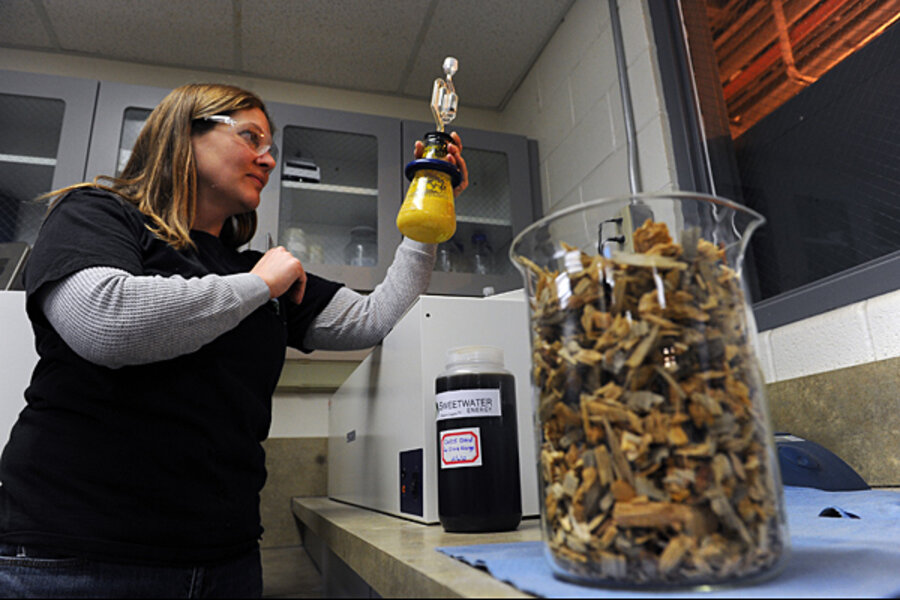The promise of advanced biofuels
Loading...
This week, the EPA announced that it was adjusting the Renewable Fuels Standard (RFS) in order to reflect market realities. As originally proposed earlier this year, the rule called for 14 million gallons of cellulosic ethanol, but the final rule sets a requirement for 6 million gallons of cellulosic ethanol this year.
However, as all the news stories focus on how the EPA has “backed down”, what goes overlooked is that there is finally a cellulosic biofuel industry in which commercial production has started.
KiOR’s biorefinery in Columbus, Mississippi started commercial production in March using wood chips to produce cellulosic fuels, and Ineos just announced on July 31 that their Indian River BioEnergy plant in Florida has begun operations to make biofuels from plant waste. Both of these are now operating at full commercial scale. Whether they’re making money yet, we don’t know, but the fact that they’re producing large volumes of cellulosic biofuels may be a historic turning point. These developments are important steps towards developing a real advanced biofuel industry that can help move us toward a point where we have other options for how to fuel our cars and trucks.
Robert Rapier, writing about this issue in January, had called commercial cellulosic ethanol production a “unicorn” because it was something that doesn’t exist, no matter how much we want it to. Today, we can honestly say that is no longer the case.
Legislative Background
Since 2010, under the requirements of the bipartisan Energy Independence and Security Act of 2007, the EPA has been required to include a standard for cellulosic ethanol. Under the law, that was to start at 100 million gallons in 2010 and increase to 1 billion gallons by 2013. However, the law gives the EPA wide latitude to set the RFS based on current technology and production capacity. That’s why the actual RFS rule for 2010 was 6 million gallons, not 100 million and the rule for 2013 was originally 14 million gallons, now down to 6 million. The RFS was intended to provide an incentive for the development of cellulosic fuels – and it seems to have finally done the job.
Now – to be clear – this has been a long time coming. When I was working on the Hill in ’06 and ’07 as we were considering updating and increasing the RFS, we had the ethanol lobbyists and businesses come in and sell us on the corn ethanol RFS as a stepping stone towards cellulosic ethanol. At the time, they told us that cellulosic was only two to three years from commercialization. It turns out they were off by a few years – but in that intervening time, we had a deep financial crisis that made financing anything difficult. It turns out that financing a factory for an unproven fuel that will compete with the largest incumbent companies on the planet was nearly impossible.
This differential between what Congress anticipated in the law and the reality of actual production shows how difficult it has been to bring these to market.
Why Do We Still Need the RFS?
Let’s remember, reducing our oil use is an important step for national security. It reduces our dependence on volatile prices, set by whatever the most recent unrest in the Middle East is; for example, over the last month, we have seen a 10% oil price spike on news of a restart of Egypt’s unrest – and they’re not even a major oil producer! I’ve written about how development of Advanced Biofuels would help our National Security by giving consumers an option to separate from the global oil market.
One of the best ways to reduce our oil use is to develop biofuel replacements. Corn ethanol has gone a long way – it now makes up 10% of the U.S. fuel supply. However, it also has gone about as far as it can go due to the upcoming ‘blend wall.’ Today, companies like KiOR, Virent, and many others are moving forward with the next generation of biofuels. The RFS ensures that they have buyers when they bring their product to market. There is an increasing discussion in Congress about dismantling the RFS – but the development of advanced biofuels are too important to leave hanging without support. The EPA announcement shows the flexibility of the RFS, and the breakthroughs in commercial production of cellulosic biofuels show that it is working.
Source: Commercial Production of Cellulosic Biofuels is No Longer a Unicorn







